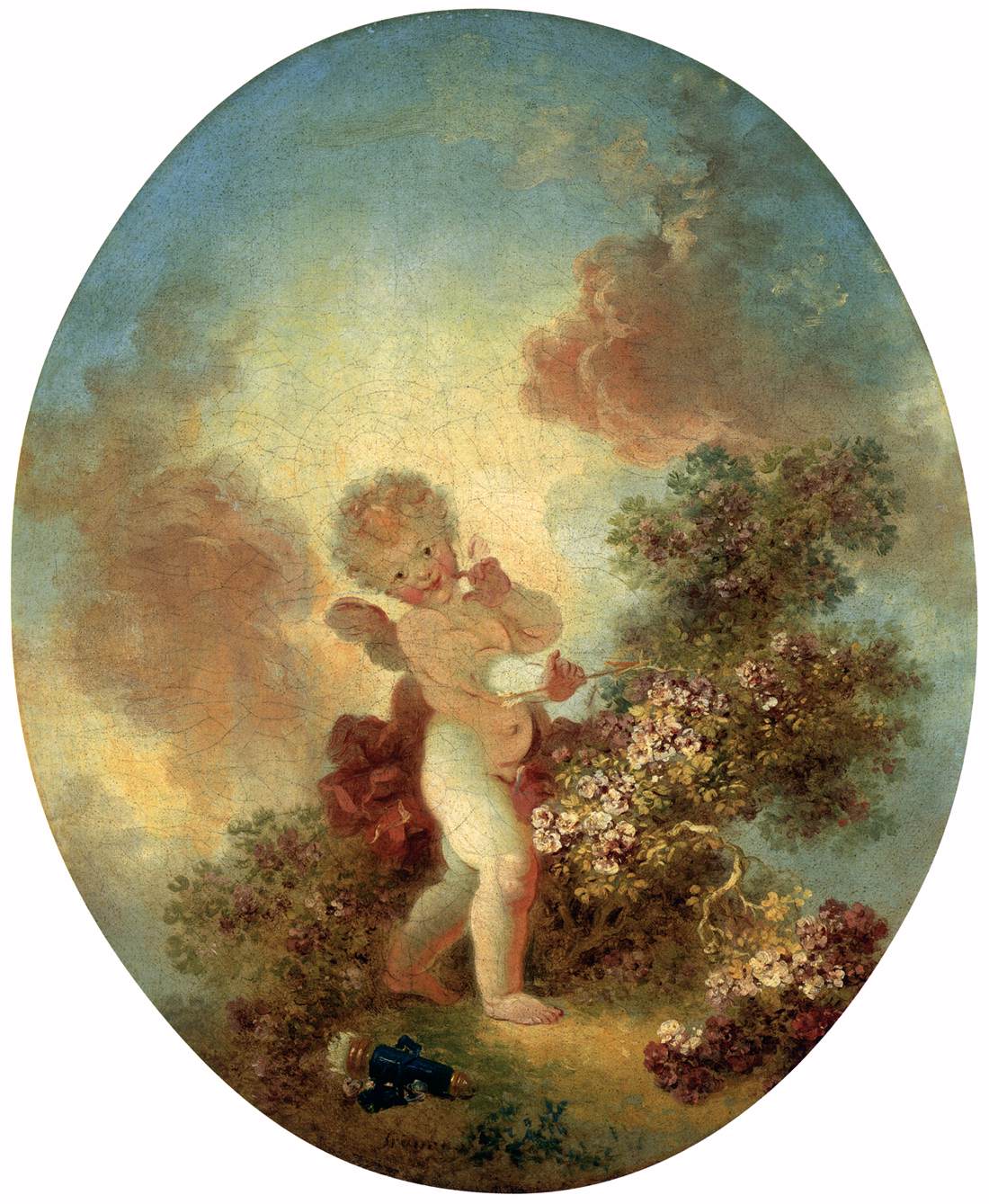Description
The painting Love the Sentinel by Jean-Honoré Fragonard is a masterpiece of French Rococo that stands out for its delicacy, sensuality and elegance. The work, with an original size of 56 x 46 cm, shows a couple of lovers in a garden, where the man, dressed as a soldier, holds a spear while the woman embraces him from behind.
The composition of the painting is very interesting, as Fragonard plays with the perspective and balance of the figures to create a sense of movement and depth. The man and the woman are at the center of the work, surrounded by a lush landscape of flowers, trees and shrubs. The soldier's spear points toward the sky, creating a vertical line that contrasts with the smooth curves of the lovers' bodies.
Color is another highlight of Love the Sentinel. Fragonard uses a soft and delicate palette of pastel tones, which reinforce the romantic and sensual atmosphere of the work. Green and pink tones predominate in the landscape, while the soldier and woman's costumes are pure white, symbolizing the purity and innocence of their love.
The history of the painting is also very interesting. Love the Sentinel was painted in 1773, during the height of the French Rococo, and was commissioned by the Comte de Saint-Julien as a gift to his wife. The work was very well received by critics and became one of Fragonard's most famous.
Although Love the Sentinel is a well-known work, there are some little-known aspects that make it even more fascinating. For example, the figure of the soldier is believed to be inspired by Fragonard's brother, who was an officer in the French army. Additionally, some critics have pointed out that the work may have a political reading, as the soldier could represent the French aristocracy, which at the time was in crisis due to the French Revolution.
In short, Love the Sentinel is an exceptional work of art that combines the beauty, elegance and sensuality of French Rococo with a very careful composition and colouring. Its little-known history and details make it even more interesting and make it one of the most emblematic works of Jean-Honoré Fragonard.

